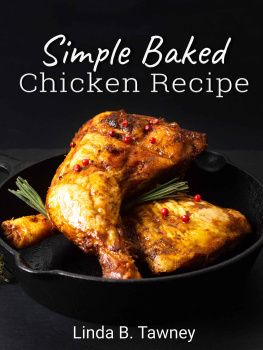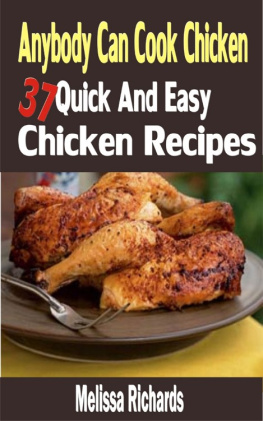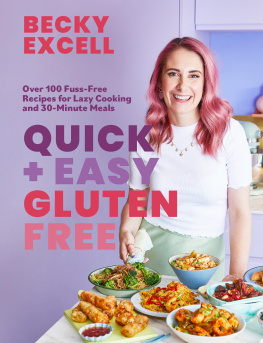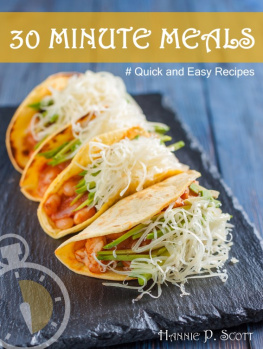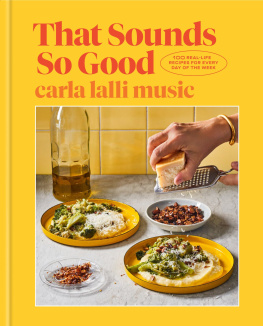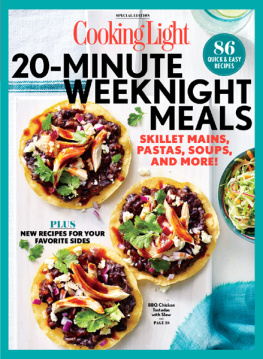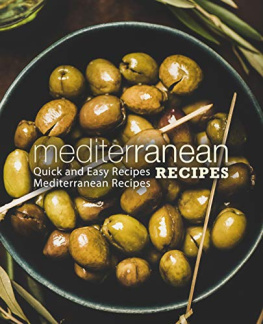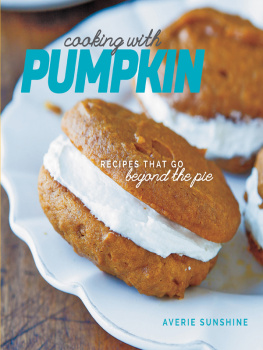My thanks go to Carey Smith, Judith Hannam,Sarah Wooldridge, Gillian Haslam, Isobel Gillanand, of course, my family.
Introduction
TOO MANY PEOPLE just don't bother to cook for themselves when theyare home alone, which is a real shame. The joy of cooking for one is thatit takes less time, washing up is minimal, and occasionally you can splurge onluxuries such as lobster because you are only buying in small quantities.
This book is about treating yourself to good food and a fabulous table,even if you are eating alone. Creating a beautiful tray for supper in frontof the telly or setting the table ready to tune in and have the radio as yourguest can be hugely satisfying and enjoyable. The recipes and ideas herewill be invaluable when all you need is food for one. Indeed, Cooking forOne should be in every kitchen it's just as appropriate if you are part ofa big family but finding yourself on your own for a few days, or are ateenager, student or single person at home. Most of us find ourselves onour own at some time or another, so just think of cooking for one as atreat, as an opportunity to cook something you have always wanted to tryor a chance to experiment with favourite ingredients.
When cooking my recipes, please don't feel you always have to followthem slavishly treat them as inspiration and create your own variations.The main courses meat, fish and vegetarian are divided into chaptersentitled 'More Time' and 'Less Time', so no matter how much time youhave available, you will always find something to tempt you.
Location, Location, Location
Where you eat is really important and setting the table or a tray should bea pleasurable experience. When I'm at home on my own, I always make surethat I set the table or tray with a proper linen napkin and a flower be it anarrangement, a single stem or simply a flowerhead floating in a glass.
It's also a good idea to vary the places where you eat. If you have a fireplace,set up a table nearby and enjoy dinner by the fire. Or if you have a garden orterrace, eat outside as much as possible. This may sounds obvious, but singlefriends I have spoken to often say they don't think this is worth bothering about.The setting, however, influences our enjoyment of food. Taking trouble over thiswill lift your spirits and make you feel special.
Shopping and the Single Cook
Shopping for the single cook is fantastic. Yes, you will have to buy the oddingredient (such as puff pastry) that comes in a larger quantity than you will need,but you can freeze any leftovers or store them in the refrigerator. Vegetables andfruits can all be bought loose and I recommend buying seasonal, organic andlocally grown food. Visit the local farmers' market or organic farm shop manyprovide an organic box scheme suitable for one person if you ask.
Most of the single people I spoke to while researching this book liked tomake the decision of what to eat for supper on the day and what they boughtwas influenced by the produce available or a recipe they had seen. Few plannedeach day's menu in advance. Of course, cooking extra portions is a great helpwhen time is short as you can take something out of the freezer in the morningand cook it when you get home later on.
Keeping a well-stocked store cupboard is essential for the single cook.Having what you need to hand means you can pull together a healthy quickand delicious meal in no time at all. See the next page for a list of my store-cupboardessentials.
My favourite stand-by ingredients are:
Fridge
lemons
tomatoes
cucumber
bacon/pancetta
butter
double cream
Parmesan cheese
eggs
potatoes (baked pots in the freezertoo for instructions)
Freezer
bread divide it up into 2 sliceswrapped in clingfilm so that youonly defrost what you need
individually wrapped chicken breasts,chops and steaks
gravy if you roast a chicken, makegravy in the usual way and freezeit in small batches
really good-quality sausages
peas and spinach
Store cupboard
risotto rice
dried pasta
ready-made gnocchi
easy-cook rice in 30g pouches
tinned tomatoes
dried porcini mushrooms
good-quality chicken and vegetablestocks
tuna fish in olive oil
porridge
Plus fresh seasonal vegetables from an organic box scheme and pots of freshherbs on the kitchen windowsill.
A word about eggs
They are the most versatile food and a larder should not be without at least halfa dozen eggs at all times! Buy good-quality free-range farm eggs from your localfarmers' market or organic shop if possible.
Storage times for fresh food
Here are a few guidelines for how long foods will keep, assuming they start out ingood condition and are well wrapped:
Cream: up to 5 days
Hard cheeses, well wrapped: 36 months
Butter: up to 7 weeks
Eggs: up to 1 month
Meat, poultry and fish: 3 days
If foods smell bad, has gone a strange colour or is growing mould, as the sayinggoes: if in doubt, throw it out!
Kitchen essentials
There are just a couple of pieces of kitchen equipment which I find really usefuland are worth investing in:
Invest in top-quality knives and always keep them sharp.
A small electric non-stick frying pan is really useful if you have limited space.
Stick blenders are great for soups and sauces and produce almost no washingup (always a plus point!).
A good-quality wok can be used for many dishes, including stir-fries and curries.
Invest in one really good copper saucepan. It will give you much pleasure everytime you use it and produce delicious food.
A mini food processor is also invaluable.
TREAT YOURSELF
Breakfast
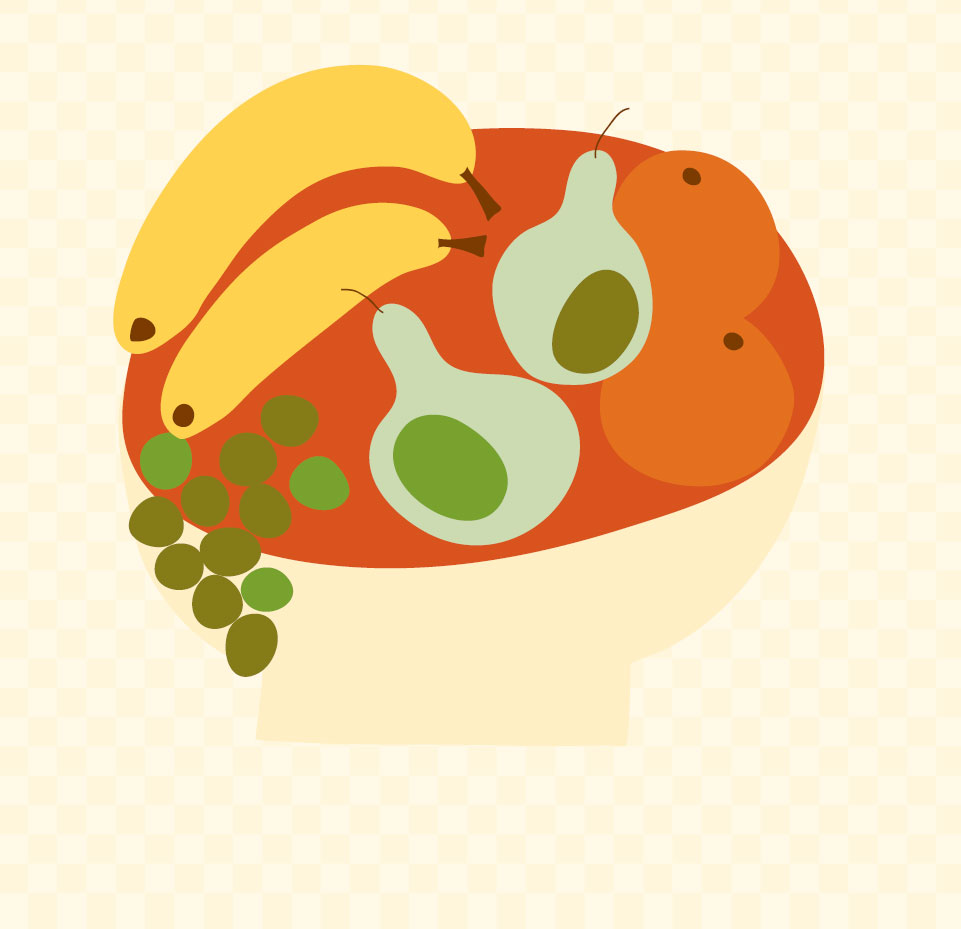
Good Morning Muffins


